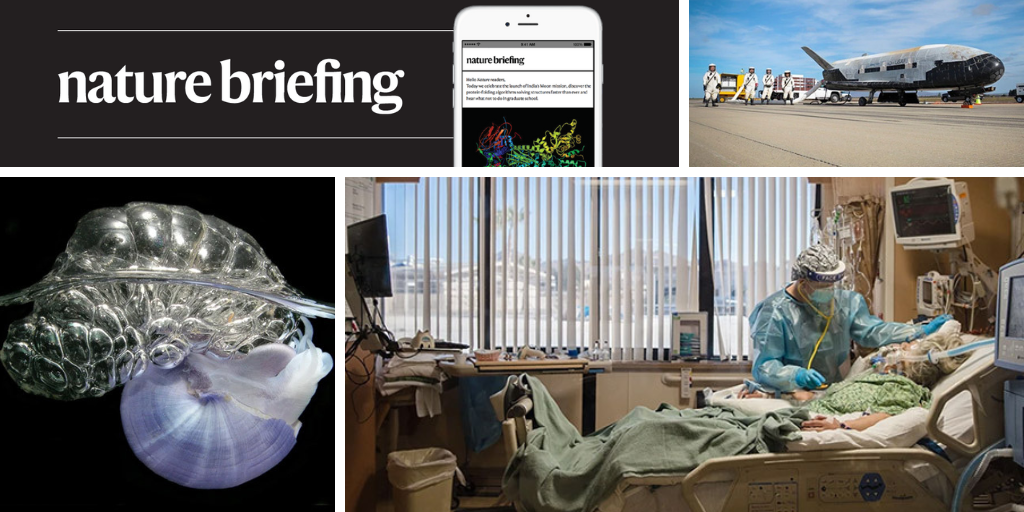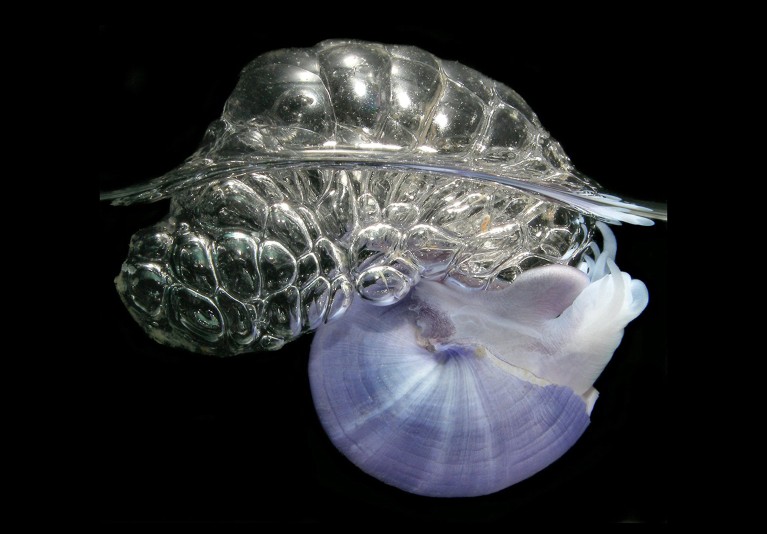Hello Nature readers, would you like to get this Briefing in your inbox free every day? Sign up here.
Many people with COVID-19 required hospitalization during the pandemic; a study now reveals genetic links between severe illness and activation of the immune system.Credit: Ariana Drehsler/AFP via Getty
Amid the fear and frenzy of providing care to patients in the first waves of the COVID-19 pandemic, scores of health-care workers enrolled more than 24,000 people with COVID-19 into a study investigating how genetics contributes to disease severity. The more than 2,000 authors reported this week that 49 DNA sequences are associated with becoming critically ill from COVID-19. The work confirms many previously implicated genes, and adds 16 new ones to the list. Among them are genes for inflammatory responses and the activation of immune cells — processes that can damage the lungs’ capacity to send oxygen to tissues.
Humans did not emerge from a single region of Africa, but from several populations that moved around the continent one million years ago and intermingled for millennia. The widely held idea of a single origin of Homo sapiens is based in part on fossil records. Computer modelling and genome data from modern African and European populations revealed that “our roots lie in a very diverse overall population made up of fragmented local populations”, says evolutionary archaeologist Eleanor Scerri. This means human evolution looks more like a tangled vine than a ‘tree of life.’
The Organisation for the Prohibition of Chemical Weapons (OPCW) has a brand-new laboratory in the Netherlands, expanding its ability to investigate alleged chemical-weapons attacks and to search for evidence of banned chemicals. “I think it will be a big deal for the OPCW,” says environmental toxicologist Alastair Hay. “The previous lab facilities OPCW had were really quite limited.” Later this year, the OPCW is due to celebrate a major milestone: the completed destruction of the world’s banned substance stockpiles.
The coming years are likely to see temporary peaks in global temperature of 1.5 ℃ above pre-industrial averages. The World Meteorological Organization (WMO) estimates that there is a 66% chance that global temperatures will surpass the milestone for at least one of the next five years. And the next five years will almost certainly break all temperature records. The El Niño weather pattern, combined with human-induced climate change, will “push global temperatures into uncharted territory,” says meteorologist and WMO chief Petteri Taalas. “We need to be prepared.”
That’s not to say that the world has passed the 1.5 ℃ goal set by the Paris agreement to avoid the worst effects of climate change — that would be determined as an average over several years. But it is worrying evidence of the state of the climate and an alarm call for the future. Last month, a United Nations report found that, under current plans, in the next ten years, we will exhaust our ‘carbon budget’ — the estimated maximum amount of emissions that will give us a 50:50 chance of limiting global warming to 1.5 ℃. Scientists hasten to add that the number is not a tipping point: every cut to CO2 is helpful, and every bit of warming is bad news.
The New York Times | 4 min read & Climate Home News
Reference: WMO global annual to decadal climate update & UN Global Stocktake synthesis report
Image of the day
Credit: Denis Riek, The Global Ocean Surface Ecosystem Alliance (GO-SEA) Field Guide (CC-BY 4.0)
The Great Pacific Garbage Patch, the largest marine debris field, is home to floating invertebrates including the violet sea snail (Janthina sp.). The snail floats on air-bubble rafts that it builds out of mucus and feeds on other floating creatures, such as blue button jellies (Porpita porpita) and by-the-wind sailors (Velella sp.). These delicate ecosystems complicate efforts to clean up ocean rubbish. (Nature | 2 min read & Science | 4 min read)
Reference: PLoS Biology paper
Features & opinion
China has landed a spacecraft that spent nine months in orbit, making the nation one of just a handful that have successfully operated a reusable spacecraft. China’s space programme is run largely by the military, which means its space missions tend to be secretive. Specialists suggest that the craft is probably similar to a US spaceplane, the Boeing X-37B. The spaceplane could have research or military uses, and might have been testing whether it could release and capture satellites while in orbit.
Australia’s overhaul of its 13-year-old research-scoring system is its chance to create assessment exercises that work for everyone. “Evaluation has the power to shape research culture for good and ill,” argues a Nature editorial. “It needs to be done well.” This might mean moving away from journal-based metrics, anticipating how appraisal systems can be gamed and including transparency, open-science and responsible-research practices in evaluations.









More News
Valleytronics in bulk MoS2 with a topologic optical field – Nature
Are robots the solution to the crisis in older-person care?
China’s Moon atlas is the most detailed ever made